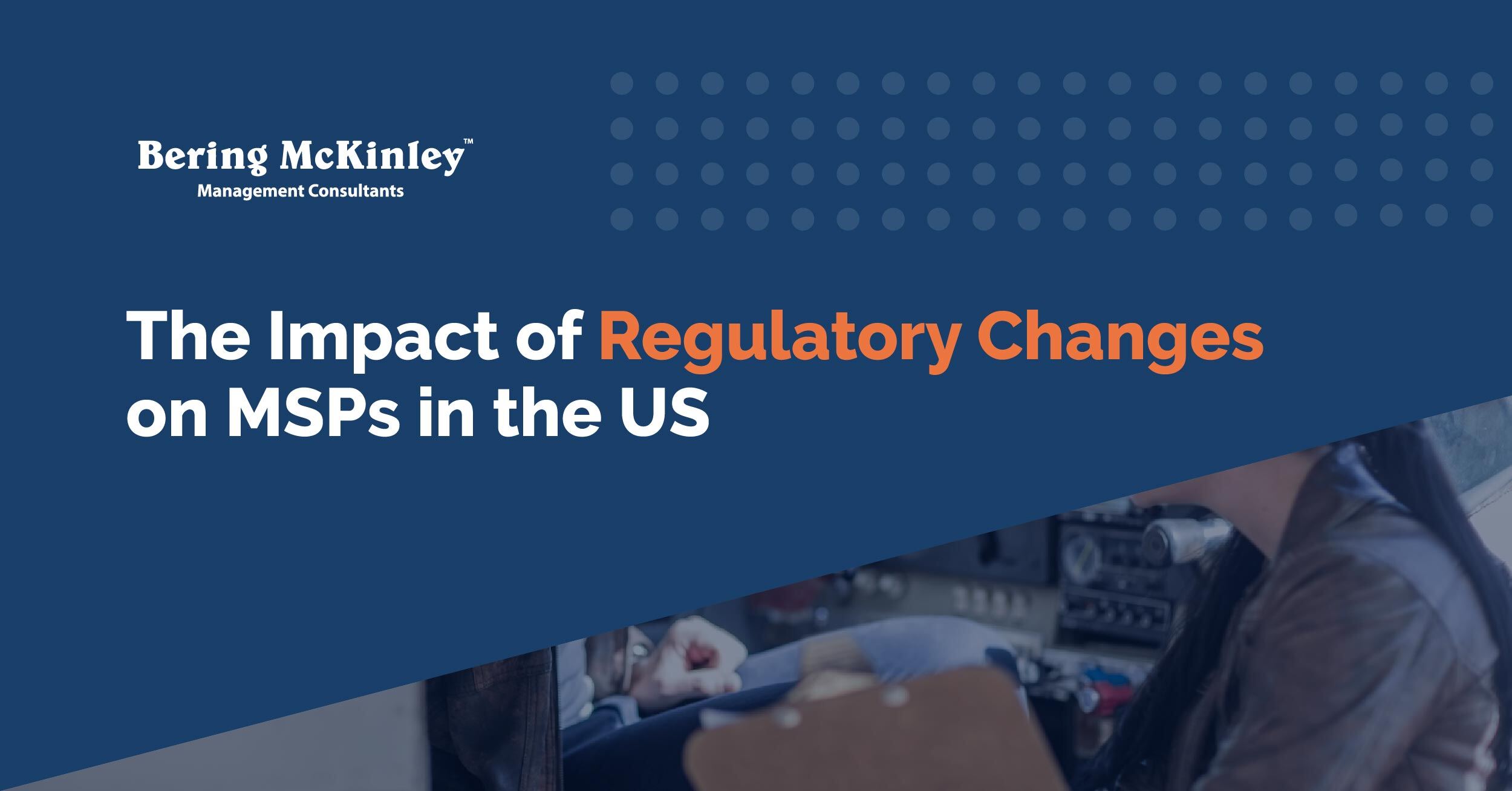Global MSP News: The Impact of Regulatory Changes on Service Providers in the US
Managed Service Providers (MSPs) operate in an industry that is constantly changing, and few shifts have been as dramatic as the evolving regulatory...
4 min read
 Josh Peterson
:
Sep 15, 2025 2:00:00 PM
Josh Peterson
:
Sep 15, 2025 2:00:00 PM

Are you new to the Managed Service Provider (MSP) space or navigating the wild world of co-managed IT? If so, chances are that “competitive SLA” sounds like either a secret handshake or the title of a lost Star Wars movie. But fear not. SLAs (Service Level Agreements) aren’t as dry or mysterious as they sometimes seem. And they’re more critical than ever to stand out as an MSP, thrive in a co-managed relationship, and keep customers and internal IT teams happy and productive.
This post decodes what makes a truly competitive SLA in 2025, why you can’t afford to ignore the latest benchmarks, and how you can future-proof your agreements. Expect a hearty serving of best practices and a few actionable resources before dessert.
Let's face it, when it comes to IT services, everyone’s expectations are sky-high, and patience is at an all-time low. Miss a critical alert or take too long to reset a password, and suddenly you’re the villain of the year. Good news? A strong, clear SLA turns you into the hero. If you’re an MSP looking to attract new clients (and not get ghosted a week later) or an internal IT leader wrangling with an external partner, you need more than generic promises. You need measurable, meaningful performance standards.
Not convinced yet? Here are three reasons MSP SLAs are having their moment:
What’s the bottom line? A competitive SLA isn’t just a "nice-to-have" in 2025. It’s your currency for trust, differentiation, and sustainable profit. Want to know more about sustainable profit? Check out our blog on Recurring Revenue Models for MSPs: A Blueprint for Long-Term Success.
An SLA is more than a piece of legalese you shove at a client during onboarding. Think of it as the blueprint for your relationship, expectations, and accountability mechanisms. Here are the essentials every modern SLA should cover:
How quickly will you (or your service desk) respond once a request lands? Industry benchmarks put critical incident response times at 15 minutes or less, with common requests under 30 minutes. No, your “first response” shouldn’t be an out-of-office emoji. Modern clients want real, human (or at least AI-backed) acknowledgement pronto.
Forget vague goals like "we’ll fix things soon." The best SLAs define time-to-resolution for various issue severities. For a Tier 1 outage, think 2–4 hours; for standard tickets, 1 business day is typical. Leading MSPs now publish their average resolution stats and use automation to stay nimble.
Your MSP may not control the weather, but you’d better have rock-solid uptime for what you do control. 99.9% uptime is the new floor for essential services (with some pushing for 99.99%). Make sure your definitions are crystal clear so there are no surprises when the calculator comes out.
If your SLA is silent about security in 2025, it’ll stand out for all the wrong reasons. Given that over 76% of MSP clients list cybersecurity as their top concern, you have to detail regular security patching, incident notification, and data recovery commitments. Bonus points for referencing best practices like SOC2 or ISO standards.
Nobody likes to talk about penalties, but grown-up partnerships need grown-up consequences. Competitive SLAs spell out:
A “set it and forget it” approach does not cut it anymore. Top MSPs now bake in quarterly SLA reviews and encourage mutual feedback. After all, client priorities shift, regulatory needs creep up, and tech trends never sleep.
According to Kaseya’s 2025 Benchmark Report, cybersecurity is the fastest-growing revenue stream for MSPs. More than two-thirds of MSPs say clients demand stronger cyber protections and guidance (not just a list of “features”). Competitive SLAs now spotlight:
Efficiency is the name of the game, especially as you juggle more clients with the same resources and razor-tight margins. The top 5% of MSPs have integrated their RMM (remote monitoring), PSA, and documentation tools to trigger SLA workflows, eliminate manual handovers, and speed up every service touchpoint.
The rise of co-managed IT means your SLA should draw clear boundaries. Be explicit about:
Clients are no longer paying for you to react; they want problems caught and fixed before things hit the fan. Modern SLAs spell out proactive monitoring metrics, real-time alerts, and predictive analytics measures (hello AI, bye-bye ticket backlogs).
Here’s the twist nobody tells you: SLAs are only as effective as the communication, tracking, and constant improvement that backs them.
Loop in all stakeholders—including internal IT, compliance, and even tough-love finance folks—from day one. SLAs are partnerships, not ultimatums.
Use measurable, client-understandable language. “System availability will be 99.9%,” not “We promise stuff will mostly work”—and show the math.
Quarterly reviews turn your SLAs from set-and-forget documents into living roadmaps. Track metrics, share dashboards, and iterate.
Plug your documentation, ticketing, and monitoring tools directly into SLA tracking. Automation beats sticky-note reminders every time.
Link SLA achievement to business outcomes (revenue, security, uptime). Don’t be afraid to ask for testimonials or reviews when you overdeliver.
A well-crafted, competitive SLA is the secret handshake of top MSPs in 2025. It builds client trust, clarifies responsibilities, and keeps your team accountable (and employed!).
If you’re not sure where to begin, or if the idea of assembling the “perfect” SLA is giving you heart palpitations, remember you don’t have to go it alone. Reach out to Bering McKinley’s team of industry veterans. They’ll help you benchmark, build, and optimize your SLAs, so you can focus on scaling, smiling, and maybe even sleeping at night.
Want to see how you stack up against the latest industry benchmarks? Contact Bering McKinley for a tailored SLA review and reclaim your edge.

Managed Service Providers (MSPs) operate in an industry that is constantly changing, and few shifts have been as dramatic as the evolving regulatory...

Achieving 99.9% uptime isn’t just a nice-to-have goal for Managed Service Providers (MSPs); it’s a decisive factor in maintaining client trust,...
%20on%20Your%20Pricing%20Structure.jpg)
When it comes to running a successful Managed Service Provider (MSP) business, your Service-Level Agreements (SLAs) are much more than a technical...